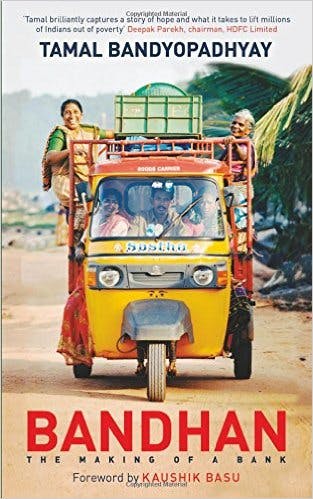
I must say that after reading this book, I am thoroughly convinced that succeeding at micro finance businesses require special kind of skills, the kind that the Founder, Mr. Chandra Shekhar Ghosh possessed. This book is about his journey of creating the most revered Micro Finance business in Indian history. He established his lending business in state of West Bengal which has deteriorated from being the jewel in the crown of the British Empire to barely having enough competence post the independence era. The book goes to describe a brief history of banking industry where several banks in West Bengal had collapsed due to excessive speculation by the founders and how Reserve Bank of India, State Bank of India, UCO Bank and Bank of India came into existence. The author also discusses the macro political and economic events which played a significant role in shaping the circumstances at the time. It is a revealing fact that International banks like Standard Chartered and HSBC operated in India much before independence but retrenched later.
Why this book is important - In the history of the banking industry in India, nobody with such a background had ever gotten a banking license. When SKS Microfinance was making headlines in the micro finance space, Bandhan was quietly growing the business. Unlike the white-collared private banking sector where money is lent to those living in cities and towns, Bandhan started by lending money to the poor farmers, vegetable vendors and others in very small amounts (500-1000 rupees). Micro finance had already been popular in the southern states of Andhra Pradesh, Karnataka etc. but had not had really taken of in East India. In just 13 years of operation, Bandhan managed to open 2000+ branches and lend ₹10,000 crores to over 67 lakh people. The phenomenal growth can be credited to Chandra Shekhar Rao’s ideology and leadership. He figured out a profitable and yet sustainable way of doing business with the poor in a way that hasn’t been replicated in our country. One can accredit the success of Bandhan’s business model to its policies. For instance, they launched in in-house insurance policy with a premium of 2%. It ensured that in case of the borrower’s demise, their families will not be asked to repay the outstanding sum of the loan. You will be delighted to read Chandra Shekhar Ghosh’s problem solving skills. I couldn’t help but chuckle at the things he implemented at the branches.
It is a fact that all entrepreneurs reach a stage where they find it difficult to scale up their operations to the next level. Bandhan was no exception to the rule but the way they dealt with scaling up issues is awe-inspiring. RBI validated their achievements and granted them the banking license. It came as a surprise to everyone including me as I hadn’t heard of Bandhan until then. It takes a very enterprising and dynamic leader to steer an organization through rapid progress and all the while adapting to new ways on the go. It was insightful to read about the implementation of enterprise banking software. Although the business model of Bandhan will continue to evolve, their core will revolve around the rural poor and for good reason. It is a bank with a real differentiating factor with a bright potential.
I recommend this book to ambitious entrepreneurs. Apart from being inspiring, the remarkable journey of Chandra Shekhar Ghosh can be described in short as, “Rags to Riches!” Read more to find out.


